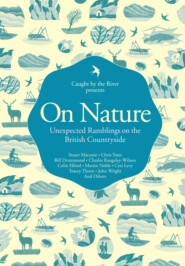По всем вопросам обращайтесь на: info@litportal.ru
(©) 2003-2025.
✖
How Can I Stop Climate Change: What is it and how to help
Настройки чтения
Размер шрифта
Высота строк
Поля
GREEN WALL OF CHINA:
Specially planted shrubs will form part of a 700 km live barrier, intended to hold back inner Mongolia’s desertification and prevent dust storms disrupting the 2008 Olympics in nearby Beijing.
In South Korea massive dust storms blowing over the border from China were so bad in 2002 that primary schools had to be closed. The storms, which have already cost China more than US $2 billion a year in lost land and productivity, threaten the livelihood of at least 170 million people, and are increasing in frequency. There are even fears that they could blight the 2008 Beijing Olympics. More than 30 per cent of the total land area of China is now being affected by desertification.
Indeed a third of the Earth’s land surface is vulnerable to desertification. Over-grazing and damaging irrigation schemes have already taken their toll, but climate change may be the final straw for such areas. According to the United Nations, desertification could drive 50 million people from their homes in the next ten years.
is California’s fruit bowl drying out?
It’s not only the poorest farmers who are losing out from climate change. California’s agriculture industry is worth an estimated US $30 billion and employs more than 1 million workers. The most populous state in the United States, California has a varied climate, from snowy mountains to desert heat, and the region is no stranger to extremes of weather. But global warming is likely to make those extremes much worse.
Fruit-growers know how sensitive trees are to changes in temperature. The trees need a cold period to allow buds to set, and then a steady warm period for fruit to grow. In hot weather fruit matures more quickly, producing earlier harvests and smaller fruit. Californian grapes are vulnerable to high temperatures, which can lead to premature ripening that affects the quality of the wine. The problems facing US farmers are recognised by Government. The US Congress in 2007 approved a US $3 billion agricultural disasters relief fund, specifically for farmers affected by weather events.
on the grapevine
You may have drunk wines from California’s Napa Valley – it’s home to some of the New World’s finest.
Annie Favia has been working in Napa’s wine industry for more than ten years and says the changes in the climate are there to see. ‘I can’t say specifically that it is climate change, but it is definitely getting warmer,’ she says. ‘You get these heat spikes when you get scorching temperatures and they can last for up to a week at a time. The hot weather burns the fruit. The sugar level in the grape goes up before the fruit is ready and the result is you get higher and higher levels of alcohol.’
Annie and her husband Andy Erickson are small-scale producers, making up to 800 cases a year for the high end of the wine market: a bottle of Favia sells for between US $50 and US $500. Annie has tried to protect the grapes from the scorching temperatures, installing micro-sprinklers that spray a fine mist and keep the temperatures down. ‘We are using irrigation a lot more,’ she says. ‘So far it hasn’t been a problem for us, but there are a couple of regions in Napa that are water-deficient.’
More than 80 per cent of agriculture in California depends on irrigation, mainly fed by snow melt in the mountains. But snowfall is predicted to decline by anything from 30 to 90 per cent by the end of the century, leaving growers at the mercy of unreliable rain. ‘We are way out of control,’ says Annie. ‘We are changing things and we do not know what is going to happen. That is pretty scary.’
climate crisis in Africa
Farming is the backbone of most African economies. Four out of five Africans live in the countryside and farm or keep livestock for their livelihoods. As extreme weather hits the continent some of the world’s poorest people are bearing the brunt of climatic shifts. Eastern and Southern Africa have been badly affected by changes in rainfall. Until recently the rainy season would normally arrive in April and May but it hasn’t done so since 2002. Rivers and irrigation canals are running dry.
According to development agencies such as Christian Aid many people in rural areas are living on the edge of starvation. As temperatures rise, declining crop yields could leave hundreds of millions unable to produce or purchase enough food. In 2006 nearly 4 million
people in Kenya needed emergency food aid and millions of cattle perished following three consecutive years of failed rains. Lack of rain and grazing for animals is destroying the way of life for cattle-herders, fishermen and farmers, who find themselves competing and sometimes in conflict over a dwindling resource. Without food or crops to sell, people are struggling. Those with livestock or access to pasture have to defend it from those without. In northern Kenya, shepherds carry automatic rifles. Others survive only with the help of food aid. Some turn to the towns and cities in search of an alternative living, often leaving children with grandparents to work the land.
SHARE ISSUE:
The early impacts of climate change are being felt by the people least responsible for bringing it on. The IPCC predicts mounting pressure on water resources, and a halving of yields from rain-fed agriculture for some African countries by 2020.
water shortages in Kenya
‘When I was young there were grazing fields, water, milk, blood and meat,’ says Lore Kapisa who heads a family of 20 in Turkana, Kenya. ‘But we have seen huge changes over the past ten years: our livestock have died, our grazing fields have shrunk and our water dried up.’ The people in Turkana have lived in the arid terrain in the north-west corner of Kenya by farming animals. Lore has struggled for the past ten years because of relentless drought. As water and pasture become scarcer, disputes between neighbouring groups are spiralling into violence and Lore now carries an automatic rifle to protect his herd. But rather than food aid Lore wants water, pasture and a vet. This, he says, would enable them to continue their traditional ways of life. ‘We have been sick and without food, but we are human beings capable of being productive. Food aid creates dependency and reduces us to lesser human beings.’
Chapter 2 (#u7b0d5c0d-3410-57a3-bc01-255b46870878)
the science of climate change (#u7b0d5c0d-3410-57a3-bc01-255b46870878)
We know climate change is happening, but what’s causing it? This chapter looks at the facts behind the freaky weather, and the implications for our planet if things carry on as they are.
why climate change is happening
Vital signs Three charts that tell a story – as global temperatures and sea levels have risen snow cover in the northern hemisphere has shrunk. The red lines give a bird’s eye view of key changes over the past 150 years based on yearly measurements (the grey dots), while the narrowing blue bands shows the room for doubt declining as measurement techniques have improved. Source: IPCC.
the greenhouse effect
Most life on Earth relies on energy from the sun to provide warmth and light. Some of the sun’s energy reflects off the Earth’s surface in the form of infrared rays, and gases in the atmosphere trap and/or reflect this energy - just as glass keeps heat in a greenhouse. The greenhouse effect helps keep the Earth warm enough to support life.
But some of these gases, particularly carbon dioxide, are building up because of pollution created by human activity. The result is more trapped heat and a sharp rise in the rate of warming.
SUN TRAP:
A thin blanket of gases around the Earth prevents some of the sun’s energy from escaping back into space.
five warming signs
Higher temperatures: Scientists have established that the global average temperature has increased by 0.76°C in the past century. Records going back over 150 years show that globally 19 of the 20 hottest years have occurred since 1980.
Melting ice: Arctic and Antarctic ice is thinning and sections of ice shelves are breaking off completely. Temperatures in the Arctic are rising twice as quickly as the global average.
Coral bleaching: Scientists have found a rise of 2°C can kill coral. Reefs are home to around a quarter of known marine species.
Rising seas: We saw an increase of 17 cm during the 20th century.
Drier: Droughts have become more intense over the past 30 years, and have lasted longer, particularly in the tropics and sub-tropics.
fossil fuels and thegreenhouse effect
Plants, trees and ocean plankton containing carbon absorbed many millions of years ago fossilised underground to form oil, coal and gas. When these are burnt the carbon is released, and combines with oxygen to form carbon dioxide. The first person on record to recognise the power of fossil fuels to change the climate was Svante Arrhenius, a Swedish scientist who published his ‘greenhouse law’ in 1896. Arrhenius estimated that doubling carbon dioxide levels in the atmosphere would lead to a rise in temperature of 5 °C and thought this promised a warmer climate in colder parts of the world. His maths wasn’t far off but few people today would agree with his predictions that rising temperatures are a good thing.
greenhouse gases
The greenhouse gases include carbon dioxide, methane, nitrous oxide ozone, water vapour, sulphur hexafluoride and halocarbons. They make up quite a small proportion of our atmosphere; some have a more powerful warming effect than others.
carbon dioxide
Carbon dioxide (CO2) is naturally occurring. People and animals produce it when breathing out whereas plants absorb and metabolise it, releasing oxygen in return.
The level of carbon dioxide in the atmosphere is measured in parts per million (ppm); or simply by weight (kg, tonnes).
Scientists believe carbon dioxide levels have been much higher in the Earth’s distant past. Geological evidence suggests that in the Cretaceous period (65-144 million years ago) it was three to six times higher than today.
RING LEADERS:
Trees are in the frontline of defence against climate change – the vast sub-arctic forests of the north being among the most important. The United States, for instance, would be having an even greater impact on global warming if its forests weren’t absorbing around a tenth of its carbon dioxide emissions.
The world was also 10-15 °C warmer then and there was no ice at the Poles. For much of the time that people have been on Earth, carbon Carbon moves between dioxide levels have been stable at around 270-280 ppm. But land, sea and air. This cycle since the Industrial Revolution they have been rising quickly, was in a finely tuned reaching 380 ppm in 2005. This is largely a result of our use of natural equilibrium, but coal, oil and gas: producing, distributing and burning fossil fuels it’s being disturbed by accounts for three quarters of all the emissions of carbon humankind’s use of fossil dioxide caused by humans. The rest comes from changes in fuels, land use change and the way land is used, particularly cutting down and burning deforestation. This trees. Scientists have calculated that carbon dioxide is diagram shows where and responsible for 63 per cent of global warming. And it can stay how much carbon is stored in the atmosphere for up to 200 years. Its long lifespan means and the yearly changes in that carbon dioxide released today will still be affecting the billions of tons of carbon climate for hundreds of years. (GtC).
Carbon moves betweenland, sea and air. This cycle was in a finely tuned natural equilibrium, but it’s being disturbed by humankind’s use of fossil fuels, land use change and deforestation. This diagram shows where and how much carbon is stored and the yearly changes in billions of tons of carbon (GtC).
CHILDREN OF THE REVOLUTION:
With their economies run on fossil fuels, the countries of the developed world have been responsible for 77 per cent of carbon dioxide emissions since the start of the Industrial Revolution.











